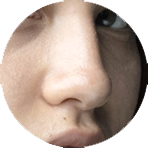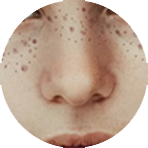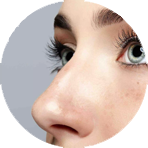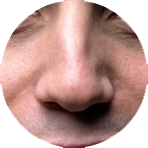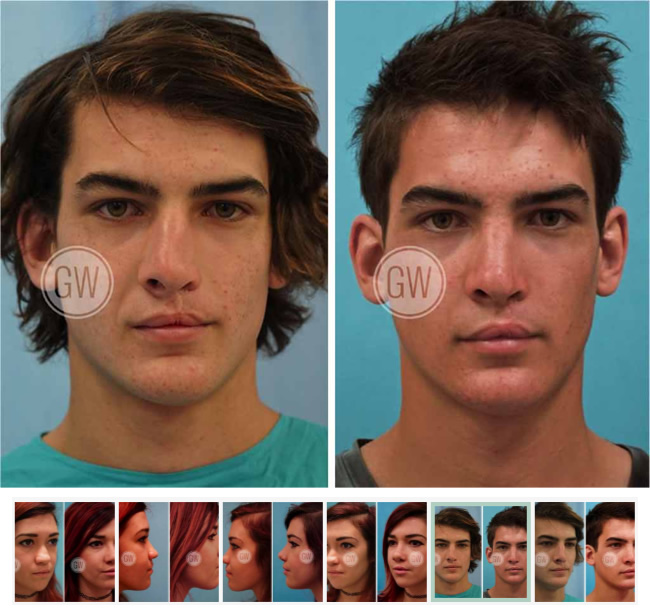In some cases people are not satisfied with the outcome of rhinoplasty and nose surgery. This can leave them feeling even more self-conscious about their nose than they were before undergoing the surgery. This is usually due to; the surgery being carried out by an inexperienced surgeon; the surgeon using improper, outdated techniques; the results not resembling what the patient originally expected; or complications arose during the procedure or the recovery process.
Since rhinoplasty is a complex procedure, sometimes it’s difficult to achieve the desired results the first time. Your nose’s functionality and appearance are closely connected, and when rhinoplasty is done to enhance the appearance of your nose, it might disrupt the functionality of the nose and your ability to breathe through the nasal cavity. Conversely, some improvements in functionality can cause an imbalance in the way your nose looks.
There are a number of cosmetic and functional reasons why a patient could be dissatisfied with a previous rhinoplasty procedure; The bone and cartilage in the nose may have formed a depression or a bump after the surgery, or too much scar tissue may have developed. Undergoing revision rhinoplasty can help correct many issues that may have arisen from a previous rhinoplasty surgery. Revision rhinoplasty can also correct functional problems such as difficulty breathing, and the collapse of a nasal valve or deviation of the septum.
Revision rhinoplasty is a plastic surgery procedure which aims to reshape the nose, and give it an improved aesthetic appearance or restore functionality, after the previous rhinoplasty procedure failed to achieve the desired results. Revision rhinoplasty is one of the most complex procedures in facial plastic surgery and Dr. Watts is a specialist in this field.
Revision rhinoplasty often requires restoring shape to the nose, smoothing prominent edges, strengthening areas of weakness and restoring and refining the nasal tip. Just like primary rhinoplasty, secondary or revision rhinoplasty can be used to correct various functional and aesthetic problems related to the nose, including, but not limited to;
-Crooked nose
-Nasal airway obstruction
-Collapse of nasal bones or cartilage
-Overdone nose job
-External and internal nasal valve collapse
-Inadequate reduction or over reduction of the dorsal height
-Incomplete shaping
-Inadequate or excessive tip projection
-Diminished respiratory function
-Excessive internal or external scarring
-A bulbous or an irregular tip.
Revision Rhinoplasty Surgery
Revision rhinoplasty is usually performed with an open method but in appropriate patients it may be performed using a closed technique. When the closed method is used, there’s minimal additional scarring since the incisions are done inside the nose. However, when correcting the results of a previous rhinoplasty, it might be necessary to use the open method where the incisions are placed across the skin that’s between the nostrils. The open approach gives the surgeon much better visibility to clearly see and accurately access the problems. The particular technique used normally depends on the objective of your surgery. When the surgery is completed, a protective splint will be placed over your nose to help it maintain its’ new shape. Nasal packs may also be placed in the nostrils so as to stabilize the septum (the dividing wall that’s between the nasal passages) but on most occasions they are not necessary.
Revision Rhinoplasty Recovery
After the surgery, particularly during the first 24 hours, your face will tend to feel swollen, it may ache, and you might experience a dull headache. Pain after the surgery is generally minimal but most patients will experience a sense of nasal congestion that will persist for the first 2-3 weeks. You might also notice some bruising and swelling around your eyes; you can reduce the swelling by applying cold compresses. Most of the bruising and swelling should disappear within 2 weeks or so. Most patients can resume their normal day to day activities in about 10 days; however, heavy lifting and exercises should be avoided for 3 weeks. You should also avoid strenuous activities which can increase your blood pressure, for 2 to 3 weeks. Avoid rubbing or hitting your nose, and avoid getting sun burned, for 6 weeks.
Call us now on (08) 7220 9338 for a free phone consultation with our practice manager, or send us an enquiry via the contact page on this website.
PLEASE TAKE INTO CONSIDERATION
Any surgical or invasive procedure carries risks. Before proceeding, you should seek a second opinion from an appropriately qualified health practitioner.

